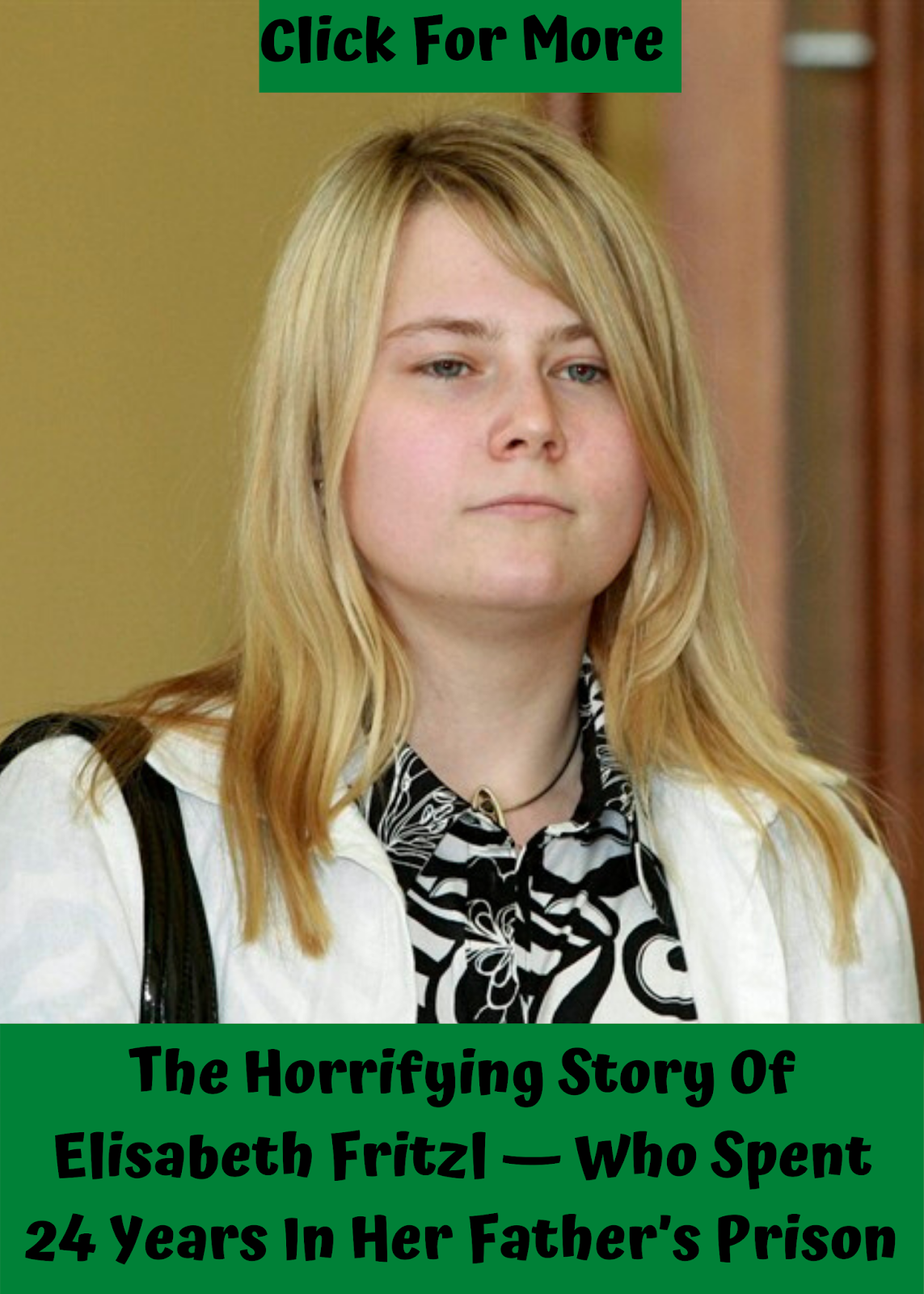Elisabeth Fritzl: The Untold Story Of Survival And Resilience
Elisabeth Fritzl is a name that resonates with horror and resilience, encapsulating a harrowing tale that shocked the world and raised important questions about human rights and mental health. Born in Austria, her life took a tragic turn when she was imprisoned by her own father for 24 years, leading to a series of unimaginable events. This article delves deep into Elisabeth's life, her experiences, and the aftermath of her ordeal, shedding light on a story that still evokes strong emotions and discussions around trauma and recovery.
In this comprehensive account, we will explore various aspects of Elisabeth Fritzl's life, including her early years, the circumstances that led to her captivity, and the eventual rescue that brought her back to the outside world. Additionally, we will discuss the psychological impact of her experiences, the legal ramifications for her captor, and how Elisabeth has managed to rebuild her life after such a traumatic experience.
This article aims to provide a thorough understanding of Elisabeth Fritzl's story, highlighting not only the tragedy but also the strength and resilience she exhibited throughout her ordeal. As we navigate through this complex narrative, we will draw on trusted sources and expert opinions to ensure the information presented is accurate and informative.
Table of Contents
- Biography of Elisabeth Fritzl
- Early Years
- The Captivity
- The Escape
- Psychological Impact
- Legal Ramifications
- Rebuilding Life
- Conclusion
Biography of Elisabeth Fritzl
Elisabeth Fritzl was born on April 18, 1966, in Amstetten, Austria. She was the second of three children in her family. Elisabeth's early life was marked by a tumultuous relationship with her father, Josef Fritzl, who was known for his authoritarian and abusive behavior.
| Personal Information | Details |
|---|---|
| Name | Elisabeth Fritzl |
| Date of Birth | April 18, 1966 |
| Place of Birth | Amstetten, Austria |
| Father's Name | Josef Fritzl |
| Number of Children | 3 |
| Year of Escape | 2008 |
Early Years
Elisabeth's childhood was marked by strict discipline and emotional neglect. Her father, Josef, was known for his controlling nature, which created an environment of fear and repression. As a teenager, Elisabeth began to rebel against her father's authority, leading to further conflict within the family.
In 1983, at the age of 18, Elisabeth was lured into her father's basement under the pretense of helping him with a project. Instead, she was taken captive, marking the beginning of her horrific ordeal.
The Captivity
Elisabeth spent 24 years in a hidden cellar, where she faced unimaginable conditions. Josef Fritzl subjected her to years of psychological and physical abuse. During this time, Elisabeth gave birth to seven children, three of whom were raised by Josef and his wife, while the other three remained with her in captivity.
- Isolation: Elisabeth was completely cut off from the outside world.
- Abuse: She endured physical violations and emotional manipulation.
- Motherhood: Despite her circumstances, she raised her children in the confined space.
The Escape
In April 2008, Elisabeth's escape became possible when her eldest daughter, Kerstin, fell seriously ill. With no other choice, Josef took Kerstin to the hospital, and Elisabeth seized the opportunity to reveal her story to the authorities. This revelation led to a police investigation, resulting in Josef's arrest.
Elisabeth's escape marked a significant turning point, not just for her but also for public awareness about domestic abuse and human trafficking.
Psychological Impact
The psychological effects of captivity were profound. Elisabeth struggled with PTSD, anxiety, and depression in the aftermath of her escape. Mental health professionals highlighted the long-term consequences of such trauma, emphasizing the importance of therapy and support.
- PTSD: Elisabeth experienced flashbacks and nightmares.
- Anxiety: She faced challenges in social situations and forming relationships.
- Support: Elisabeth sought therapy to help her cope with her past.
Legal Ramifications
Josef Fritzl was charged with multiple offenses, including murder, incest, and false imprisonment. In 2009, he was sentenced to life in prison, sparking discussions about justice and accountability in cases of domestic abuse.
The legal proceedings highlighted the need for stronger laws and protections for victims of domestic violence and human trafficking.
Rebuilding Life
Since her escape, Elisabeth has made significant strides in reclaiming her life. She has sought therapy, rebuilt relationships with her surviving children, and worked towards regaining her independence. Her story has become a symbol of hope and resilience for many survivors of abuse.
Elisabeth's journey emphasizes the importance of support systems for survivors and the need for society to address the root causes of domestic violence.
Conclusion
The story of Elisabeth Fritzl is a testament to the resilience of the human spirit in the face of unimaginable adversity. Her experiences shed light on the critical issues of domestic abuse and mental health, reminding us of the importance of empathy and understanding. As we reflect on her journey, let us advocate for the rights and well-being of all survivors of trauma.
If you found this article insightful, please leave a comment or share it with others. Together, we can raise awareness and foster a supportive community for those in need.
Thank you for taking the time to read about Elisabeth Fritzl's extraordinary story. We encourage you to explore other articles on our site for more inspiring narratives and important discussions.
Luca Monacci: A Rising Star In The World Of Technology And Innovation
Deirdre Imus Remarried: A New Chapter In Her Life
AJ Styles' Wife: A Deep Dive Into The Life Of Wendy Jones


